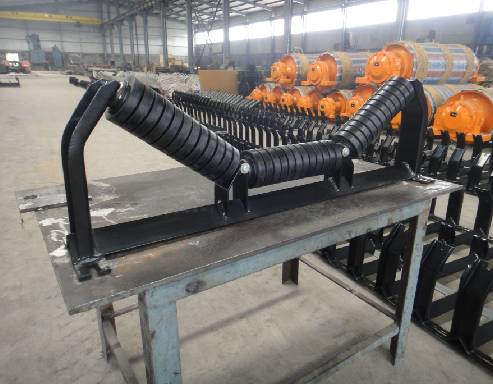 Afrikaans
Afrikaans  Albanian
Albanian  Amharic
Amharic  Arabic
Arabic  Armenian
Armenian  Azerbaijani
Azerbaijani  Basque
Basque  Belarusian
Belarusian  Bengali
Bengali  Bosnian
Bosnian  Bulgarian
Bulgarian  Catalan
Catalan  Cebuano
Cebuano  Corsican
Corsican  Croatian
Croatian  Czech
Czech  Danish
Danish  Dutch
Dutch  English
English  Esperanto
Esperanto  Estonian
Estonian  Finnish
Finnish  French
French  Frisian
Frisian  Galician
Galician  Georgian
Georgian  German
German  Greek
Greek  Gujarati
Gujarati  Haitian Creole
Haitian Creole  hausa
hausa  hawaiian
hawaiian  Hebrew
Hebrew  Hindi
Hindi  Miao
Miao  Hungarian
Hungarian  Icelandic
Icelandic  igbo
igbo  Indonesian
Indonesian  irish
irish  Italian
Italian  Japanese
Japanese  Javanese
Javanese  Kannada
Kannada  kazakh
kazakh  Khmer
Khmer  Rwandese
Rwandese  Korean
Korean  Kurdish
Kurdish  Kyrgyz
Kyrgyz  Lao
Lao  Latin
Latin  Latvian
Latvian  Lithuanian
Lithuanian  Luxembourgish
Luxembourgish  Macedonian
Macedonian  Malgashi
Malgashi  Malay
Malay  Malayalam
Malayalam  Maltese
Maltese  Maori
Maori  Marathi
Marathi  Mongolian
Mongolian  Myanmar
Myanmar  Nepali
Nepali  Norwegian
Norwegian  Norwegian
Norwegian  Occitan
Occitan  Pashto
Pashto  Persian
Persian  Polish
Polish  Portuguese
Portuguese  Punjabi
Punjabi  Romanian
Romanian  Russian
Russian  Samoan
Samoan  Scottish Gaelic
Scottish Gaelic  Serbian
Serbian  Sesotho
Sesotho  Shona
Shona  Sindhi
Sindhi  Sinhala
Sinhala  Slovak
Slovak  Slovenian
Slovenian  Somali
Somali  Spanish
Spanish  Sundanese
Sundanese  Swahili
Swahili  Swedish
Swedish  Tagalog
Tagalog  Tajik
Tajik  Tamil
Tamil  Tatar
Tatar  Telugu
Telugu  Thai
Thai  Turkish
Turkish  Turkmen
Turkmen  Ukrainian
Ukrainian  Urdu
Urdu  Uighur
Uighur  Uzbek
Uzbek  Vietnamese
Vietnamese  Welsh
Welsh  Bantu
Bantu  Yiddish
Yiddish  Yoruba
Yoruba  Zulu
Zulu Different Types of Pulleys Used in Conveyor Belt Systems for Efficient Material Handling
Types of Pulleys in Conveyor Belts
Conveyor belts are integral components in various industries, facilitating the transportation of materials from one point to another with efficiency and speed. A crucial element of these conveyor systems is the pulley, which plays a vital role in the movement and manipulation of the conveyor belt. Understanding the different types of pulleys used in conveyor belts is essential for optimizing their performance and ensuring the smooth operation of material handling systems.
1. Drive Pulleys
Drive pulleys, also known as head pulleys, are the primary power sources in a conveyor system. They are typically located at the discharge end of the conveyor. Drive pulleys are powered by motors, which allow them to turn and move the conveyor belt along its path. The friction between the belt and the drive pulley enables the belt to carry materials up and down inclines, making them particularly important in applications involving elevation changes. These pulleys can be equipped with various surface finishes to enhance grip and reduce slippage.
2. Idler Pulleys
Idler pulleys do not provide any power to the system; rather, they support the belt as it travels along the conveyor. User convenience, efficiency, and maintenance are significantly influenced by the appropriate placement and choice of idler pulleys. Idler pulleys help maintain belt tension and align the belt, preventing excessive wear and tear. They come in various configurations, including flat, grooved, and crowned designs, each serving specific purposes depending on the application and material being transported.
Located at the tail end of the conveyor, return pulleys facilitate the movement of the belt back to the drive pulley, completing the conveyor cycle. These pulleys play a critical role in promoting belt tracking and stability. In many designs, return pulleys are flat and relatively low-friction to minimize heat generation and wear on the conveyor belt. Properly installed return pulleys help maintain the alignment of the belt, reducing the risk of spills and disruptions in material handling.
types of pulley in conveyor belt

4. Take-Up Pulleys
Take-up pulleys are essential for maintaining the appropriate tension in the conveyor belt. Located either at the head or tail end of the conveyor system, these pulleys allow for adjustments to be made to the belt's tension as it stretches over time or as wear occurs. Proper tension is vital to the reliability and longevity of the conveyor system; too much tension can lead to premature wear on the belt and components, while too little can result in slippage and misalignment. Take-up pulleys can be either manual or automatic.
5. Snub Pulleys
Snub pulleys are used to increase the contact area between the conveyor belt and the drive pulley. By providing an additional surface for the belt to adhere to, snub pulleys help enhance the driving force, especially in horizontal or incline applications where grip is paramount. Snub pulleys are strategically placed to ensure optimal performance, and their design may vary based on the specific needs of the conveyor system.
6. Wing Pulleys
Wing pulleys are a less common but highly effective type of pulley, often utilized in applications where material spillage is a concern. They feature a unique, winged design that allows for improved self-cleaning properties, reducing the risk of material buildup and slippage on the belt. Wing pulleys are frequently employed in heavy-duty applications where the handling of bulky materials is required.
Conclusion
Understanding the various types of pulleys in conveyor belt systems is crucial for the design, operation, and maintenance of efficient material handling systems. Each pulley type serves its unique purpose, contributing to the overall effectiveness of conveyor operations. By selecting the appropriate pulleys and ensuring their proper installation and maintenance, businesses can maximize productivity, reduce downtime, and extend the lifespan of their conveyor belts. As industries continue to evolve, advancements in pulley technology will likely enhance the performance of conveyor systems even further, paving the way for increased efficiency and effective material management.
-
Revolutionizing Conveyor Reliability with Advanced Rubber Lagging PulleysNewsJul.22,2025
-
Powering Precision and Durability with Expert Manufacturers of Conveyor ComponentsNewsJul.22,2025
-
Optimizing Conveyor Systems with Advanced Conveyor AccessoriesNewsJul.22,2025
-
Maximize Conveyor Efficiency with Quality Conveyor Idler PulleysNewsJul.22,2025
-
Future-Proof Your Conveyor System with High-Performance Polyurethane RollerNewsJul.22,2025
-
Driving Efficiency Forward with Quality Idlers and RollersNewsJul.22,2025





























